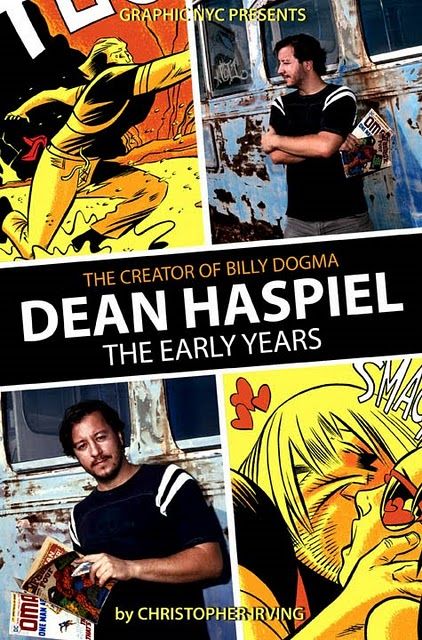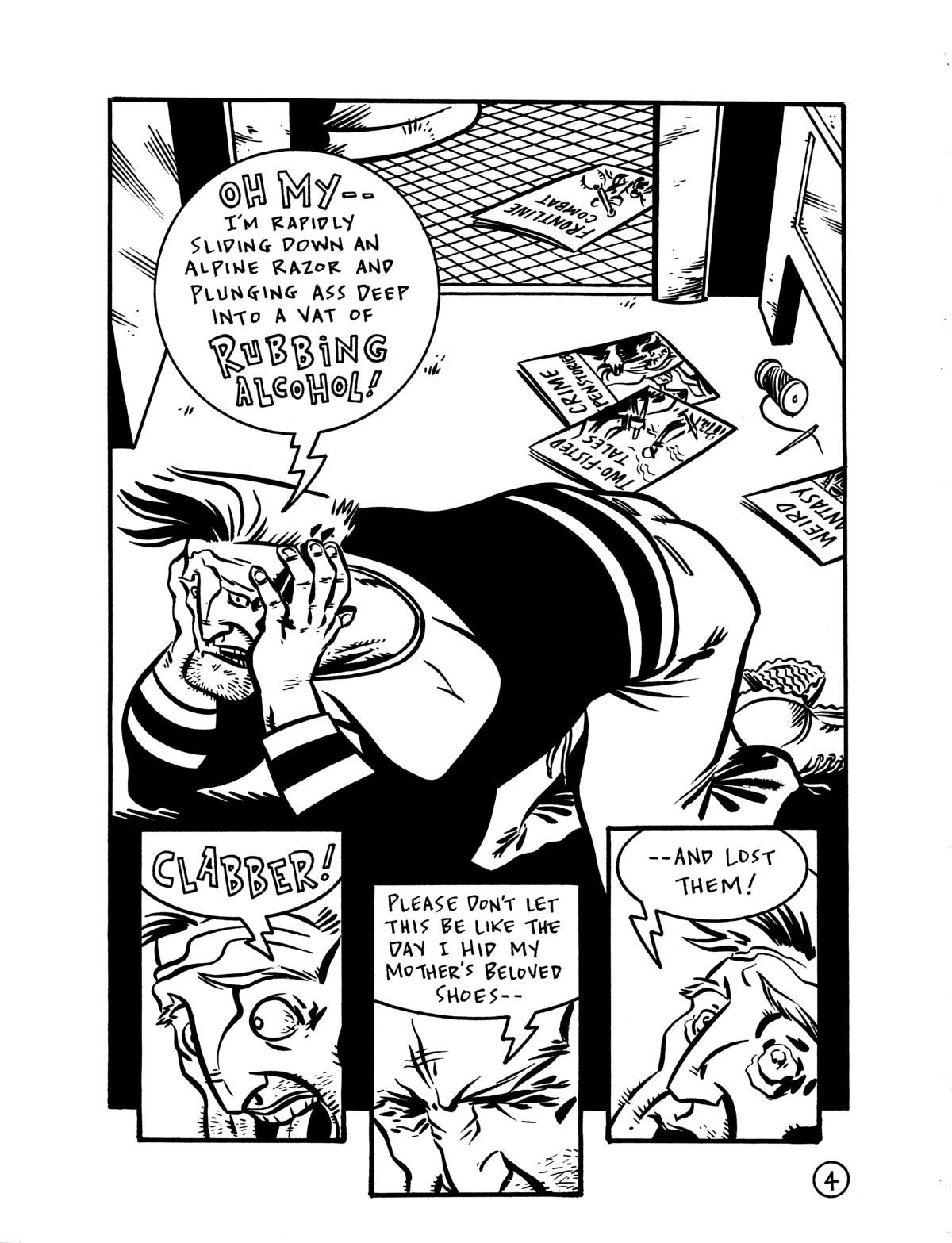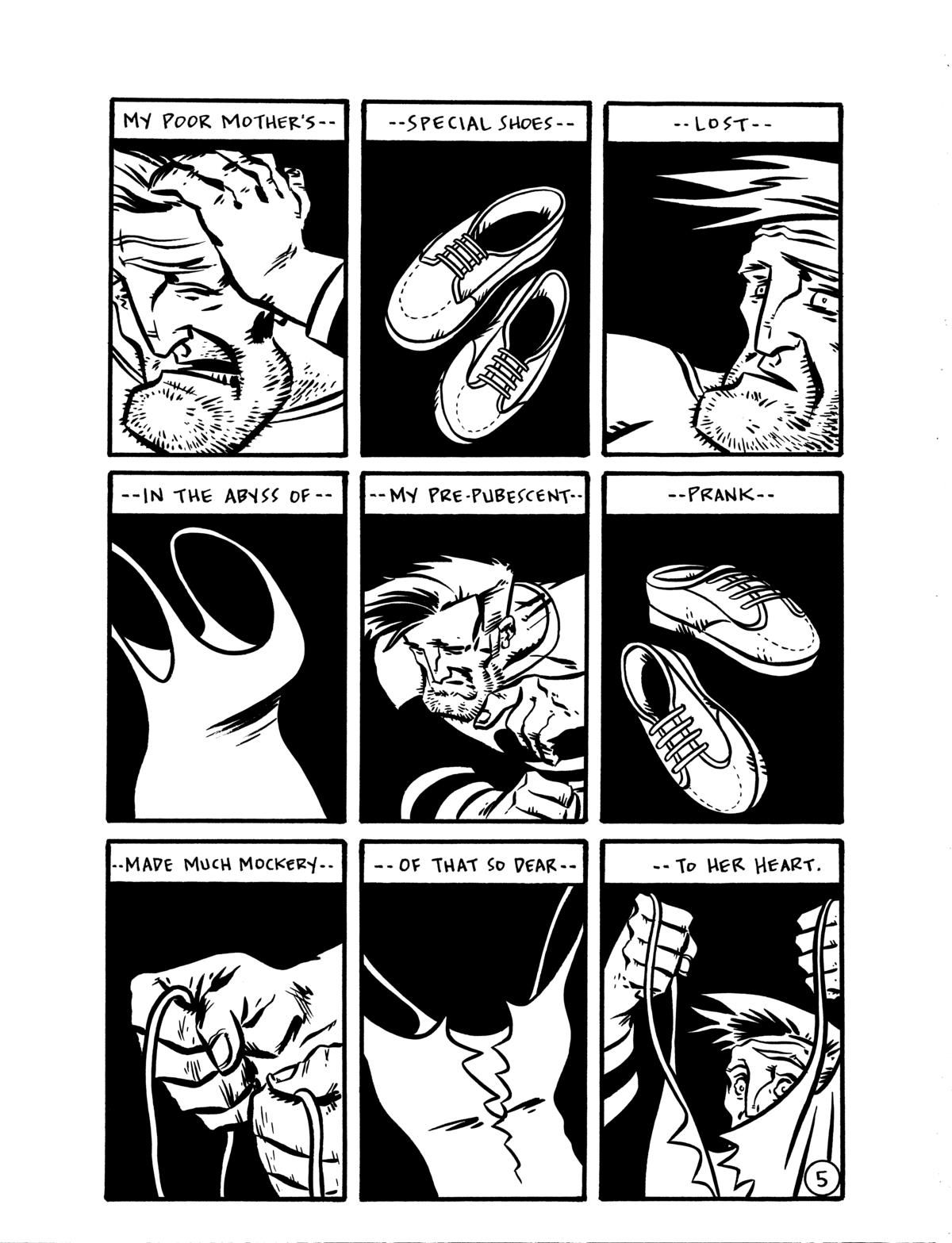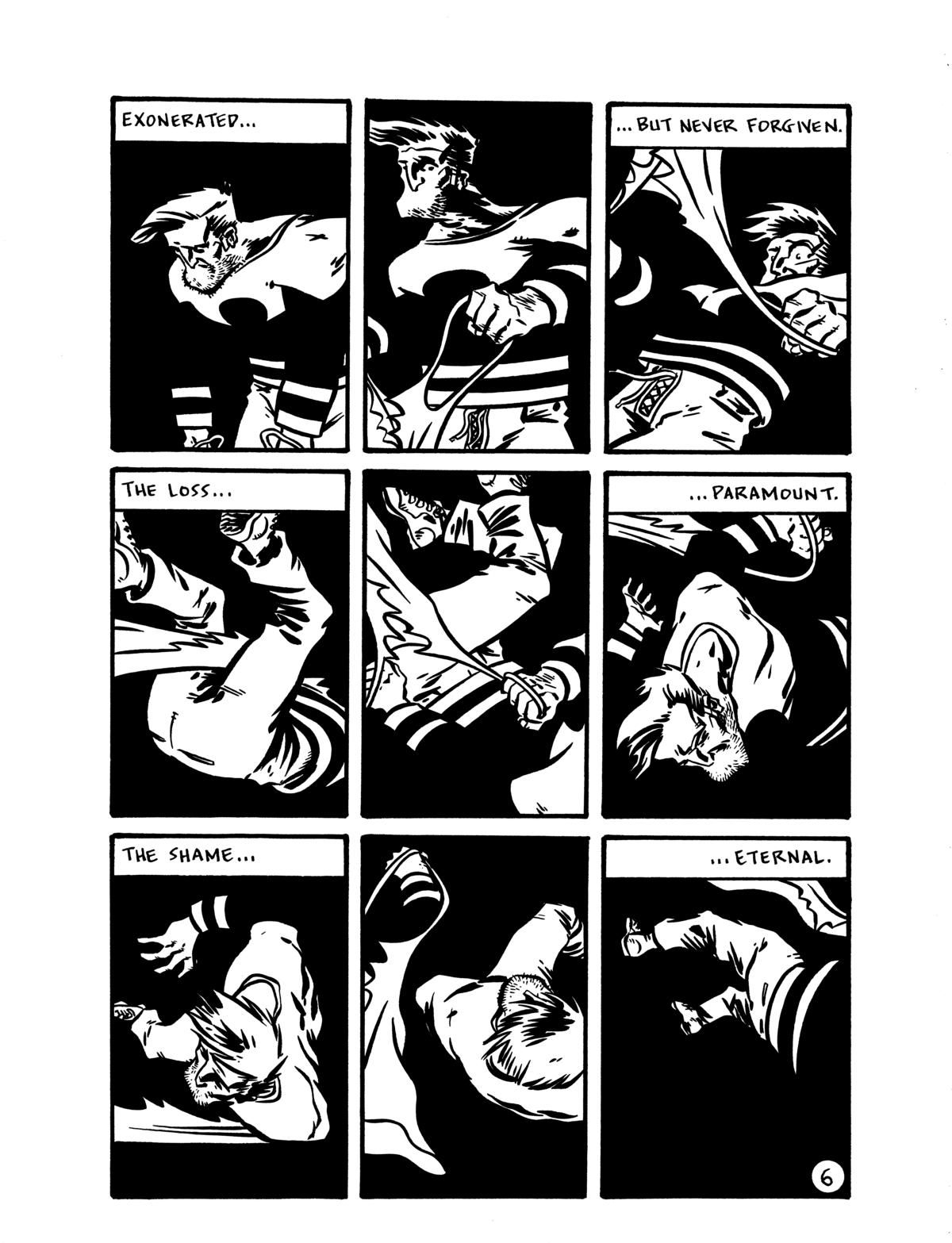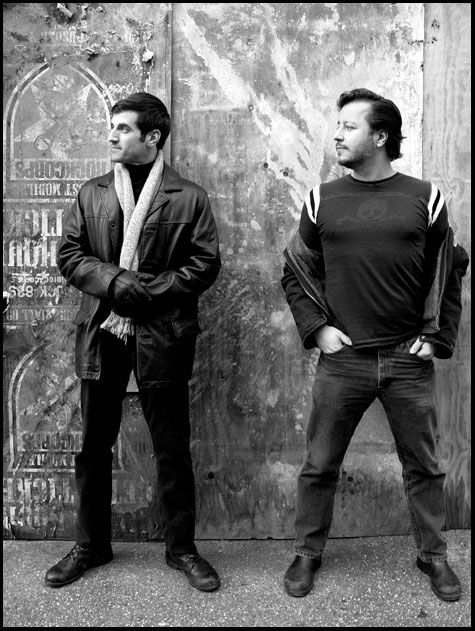Besides being a mouthful of a title, Graphic NYC Presents: Dean Haspiel, the Early Years represents a fascinating combination of an artist profile/interview book and a collection of the early works of cartoonist Dean Haspiel, the acclaimed creator perhaps best known for his collaborations with Harvey Pekar in American Splendor and Jonathan Ames in The Alcoholic. Due out in early October from IDW/Desperado, the book is put out by writer and editor Christopher Irving and photographer Seth Kushner (the team behind the popular cartoonist profile site, Graphic NYC ). Additional photography is provided by Ryan Roman. Recently, I spoke with Irving and Haspiel to discuss the project.
The genesis of this project goes back to an interview Irving had with Haspiel years ago for an earlier book. As Irving explained, “About four years ago, I actually wrote an entire art book on Dean for another publisher. Unfortunately, some censorship issues came up, and I dropped the book for a better publisher. When Joe Pruett at Desperado came along with an offer, we couldn't resist combining my Graphic NYC essays and Ryan Roman and Seth Kushner's photography with a collection of Dino reprints.”
Outside of the great Haspiel comic work itself, the highlight of the collection is definitely the format. Irving’s extensive interviews with Haspiel (as well as essays by Irving about Haspiel) are framed around reprints of Haspiel’s early work along with various auto-biographical comics that Haspiel has written over the years. The interviews and the auto-bio comics combine to form a strong narrative of Haspiel’s life. What’s particularly interesting is that the Haspiel comics come from all different points in his career and are each snippets from various times in his life – it is only now that they are put together to form a cohesive chronological narrative. Haspiel noted, “I had no idea I was culling such a tapestry. Early in my career my goal was to pencil something like The Fantastic Four or Shazam, but when that did not happen, I had to pave my own way and ‘Write what you know’ is what they say. It was Chris, though, who was able to identify the auto-bio elements in my string of works.” Irving further explained, “I think that deep, personal correlation between Dean's life experiences and work as a cartoonist is what makes him such a great subject. He wears his heart on the sleeve of his black t-shirt.”
Haspiel first began working on comic books while still in high school in New York City with his close-knit circle of friends, including guys like fellow cartoonist Josh Neufeld and Larry O’Neil, son of legendary comic book writer Denny O’Neil. This book also collects some of those very early pages of Haspiel as he and Neufeld did a series of back-and-forth “challenge” pages where their characters fought each other, but after awhile the challenges got more and more outlandish until, as Haspiel describes it, “I got gay with Josh Neufeld on Slash vs. Blade, a creative vault-out-of-the-closet.”
Around this same time, Haspiel began working as an assistant for first Bill Sienkiewicz (on New Mutants and Elektra: Asssassin) and then Howard Chaykin on American Flagg! at Upstart Studios in the mid-1980s, where Walter Simonson was also working during his run on Thor. There is an epic story in the comic involving Walt Simonson, Haspiel and a copy of Prince’s “Little Red Corvette” that is by itself worth the price of the comic.
As someone who has been working in the comic book scene in New York City for going on thirty years now, Haspiel has a unique vantage point on how things have evolved. “The New York City comic scene has grown exponentionally,” Haspiel observed, “Eisner and Kirby would be proud to see what’s happening in Brooklyn today. A combination of the internet, self-publishing, and savvy Marvel and DC editors willing to open their doors to more diverse comix making solutions has encouraged a massive crop of cartoonists grasping for the brass ring.” He went on to describe what makes the New York scene so vibrant today – “There is an undeniable energy that studios yield and cross-reference and share. Forming DEEP6 studios a few years ago was a creative coup for me - so much talent in such a compact space. Community is essential to perpetuating the creative cause. A year or so after DEEP6 formed, another studio formed next to us, XOXO [aka Hugs & Kisses] and we're about to combine these two studios into DrawBridge Studios. You heard it here first!”
An appealing aspect of Haspiel’s narrative is that you can literally see as Haspiel and the cartoonists around him evolve – it’s like looking at comic book history unfolding in front you. Irving described it like this, “Since starting Graphic NYC and talking to all of these artists of different generations, I've seen an interesting through line. Let's go with just one strand: Gil Kane mentored Howard Chaykin, Howard mentored Dean, and Dean has mentored Michel Fiffe and several other up and comers (myself and Seth included).” On that point, and in reference to the previous point about the “savvy” Marvel and DC editors, I asked Haspiel to reflect on his own history a bit by naming which editors had the biggest impact upon his career, and he replied, “Andy Lis opened the door for me at Marvel and I owe him one for that. Otherwise, Jonathan Vankin was a great, forward thinking editor to work with on The Quitter and The Alcoholic and Joan Hilty is the very best editor I’ve worked with (thus far) on Cuba: My Revolution. I also dig working with Axel Alonso, who is smart and cuts to the chase, and Sheila Keenan at Scholastic was great.”
A side effect of reflecting on all of this history is that Haspiel has to sit down and closely examine his own past, both personal and artistically, and as he puts it, it is “brutal but necessary if we're going to do this honestly.” Brutal is an excellent word to describe the honesty that you get at times in this book. There is one comic story that involves Haspiel’s father and, well, a saucer of sperm. Haspiel reflected, “Yeah -- the sperm story -- I cringed, but felt we had to put it in this collection since I abandoned it for my Opposable Thumbs collection, awhile back.”
Besides some new (to the public) auto-biographical stories, there is also an unpublished story featuring Haspiel’s popular Billy Dogma character. Titled “The Devil’s MuuMuu,” it was the untold/scrapped origin of Billy. The book features the 21 pages that were finished for the comic along with a summary of the remaining 27 pages. Here is a three-page sample…
Here, also, is a sample of some of the photography work by Ryan Roman, who was a part of the original Irving/Haspiel project that evolved into this release.
A picture of the artist...
and a shot of Irving and Haspiel together...
Seth Kushner, who Haspiel describes as a “brilliant photographer whose pictures haunt me – in a good way,” was a de-facto art director for the book (and gave input to book designer Rich Fowlkes), also provides a centerfold for the collection. And in case you were wondering, no, there are no black bars in this centerfold.
As a whole, the book provides not just a reflection on Haspiel’s work and the artist himself (both of which are quite engaging), but it serves as a glimpse at an interesting time in comic history, when the “do it yourself” and indie comix scene began to become a part of the mainstream, and as Haspiel tells it, a time that formed his “’no permissions, no apologies’ attitude towards his career path.” It is a path worth reading about.
The book is currently on order in the July Previews, order number JUL10 0363. The book has a website which you can find here ), complete with an 8-page preview of the book. Plus, we could not leave you without sharing what every red-blooded American wants, a picture of Dean Haspiel’s Giant-Sized Man-Thing. ).


